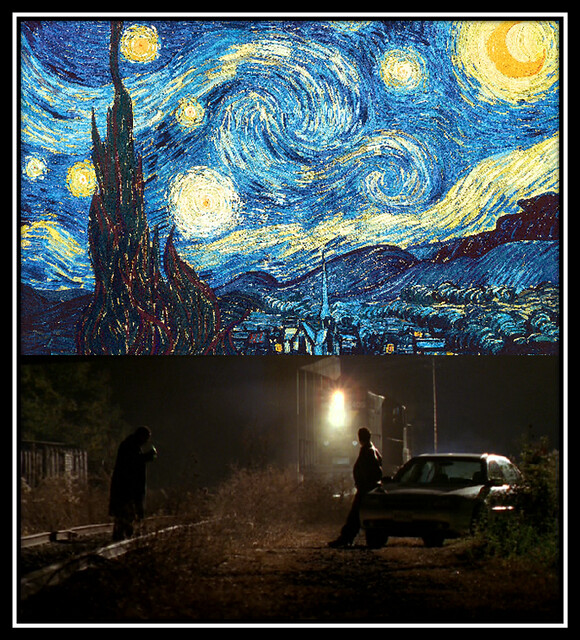It’s a classic action movie with an emerging romance that sparks the protagonist’s actions and choices. However, the soundtrack and soundscape of the movie feels much different than most action movies.
On Wikipedia, there’s a blurb about the choices and motives for the music chosen and created for the movie:
Most of its ethereal electronic-pop score was composed by Cliff Martinez. Refn was a particular fan of his ambient work on the Sex, Lies, and Videotape soundtrack. The score contains tracks with vintage keyboards and bluntly descriptive titles. Refn wanted electronic music for the film and to have the music occasionally be abstract so viewers can see things from The driver’s perspective. He gave composer Martinez a sampling of songs he liked and asked Martinez to emulate the sound, resulting in “a kind of retro, 80ish, synthesizereuropop”. Editor Matt Newman suggested Drive’s opening credits song – “Nightcall” by French electronic musician Kavinsky.
Winding Refn wanted a score by Johnny Jewel of Desire and Chromatics, whose music was used in the film, but the studio had other plans. They instead hired Martinez at the last minute to imitate the style and feel of Jewel’s bands Chromatics and Glass Candy.
As Winding Refn was going through mixer Johnny Jewel’s catalog, he picked out “Under Your Spell” and “Tick of the Clock” because he thought of Drive being a fairytale. During Drive‘s climax, “A Real Hero”‘s keynote melody, about becoming “a real human being, and a real hero”, refrains because that is when the driver changes into both those statuses’. At first, Jewel worried that “Under Your Spell” might be too literal but soon realized it is used in Drive “in the exact same way that I was feeling it when I wrote it. He definitely got the nuance of the song, and understood what it was supposed to mean, and he wanted to give that emotion to the viewer, that same feeling.”
Thinking of music in terms of basic elements, Jewel would tell the director that for certain scenes, it should not have bass since, as an earth tone, it usually is used for a more emotional or ominous part. Jewel thought the music should be upper register and relaxing for the “dreamlike” scene. To help himself with the writing process and conjure up melodies, the producer would perform a procedure where he highlighted many phrases from the novel, then printed those words in large font and hung them on his walls or drew pictures during viewings of Drive.
My process for creating this mash-up of the music to mimic the arc of the story, I found as many songs as possible from the soundtrack on YouTube and downloaded them as MP3s. I then imported them to Audacity and began to arrange them. It begins with Kravinsky’s “Nightcall,” just as the movie starts with that song. Then it goes into Desire’s “Under Your Spell.” I selected a chunk of the song whose lyrics seemed to represent the romantic interest in the movie and how she affects the driver. I copy and pasted that selection from “Under Your Spell” multiple times. I then selected thirty-second portions from the other songs, many of which were just instrumental, and overlaid them with “Under Your Spell.” These chunks represent the plot line and what happens to the driver. By keeping “Under Your Spell” constantly playing, I hoped to reflect how the woman really led the driver to get into this whole mess on her behalf.
I don’t think my rendition of this assignment is the same as what was intended, but I think my adaptation of it suits the movie as it’s a very sound based experience and the soundtrack is very important to the movie. The details are very abstract and vague, so I think this retelling of the story through the soundtrack suits the movie’s narrative style.






